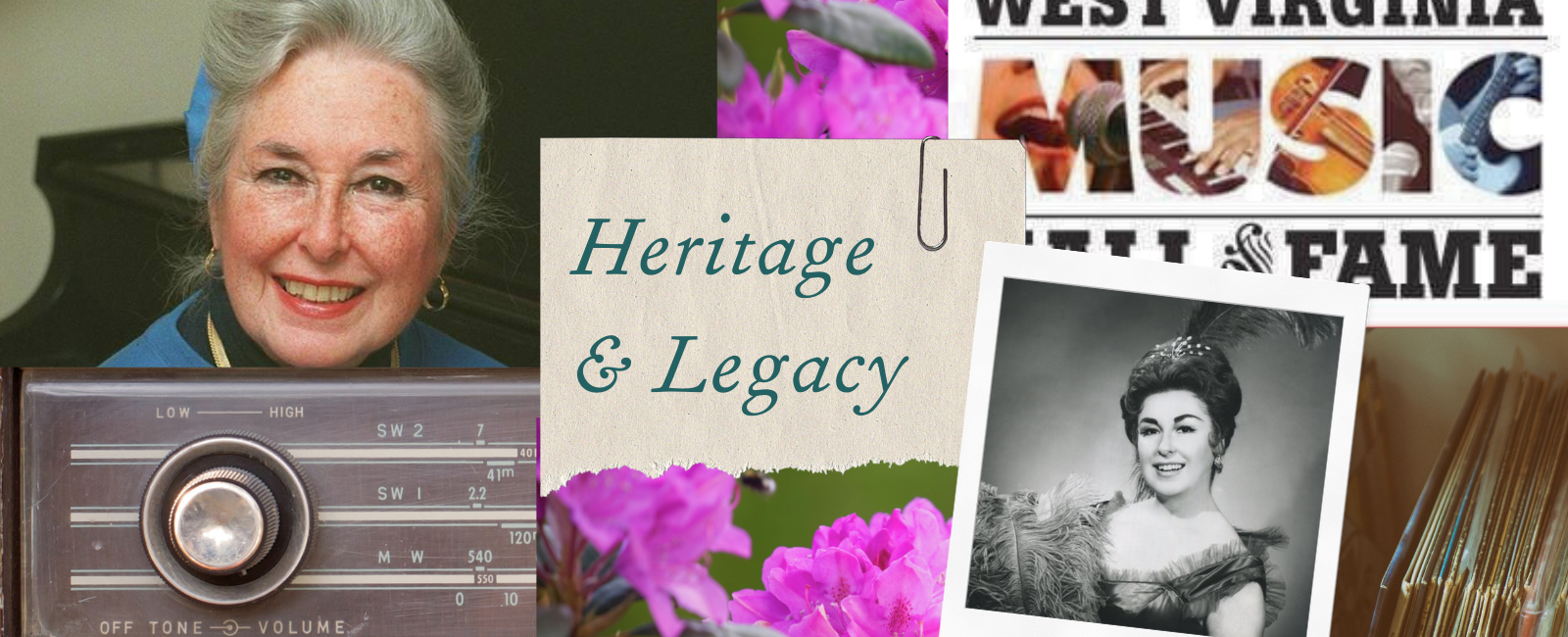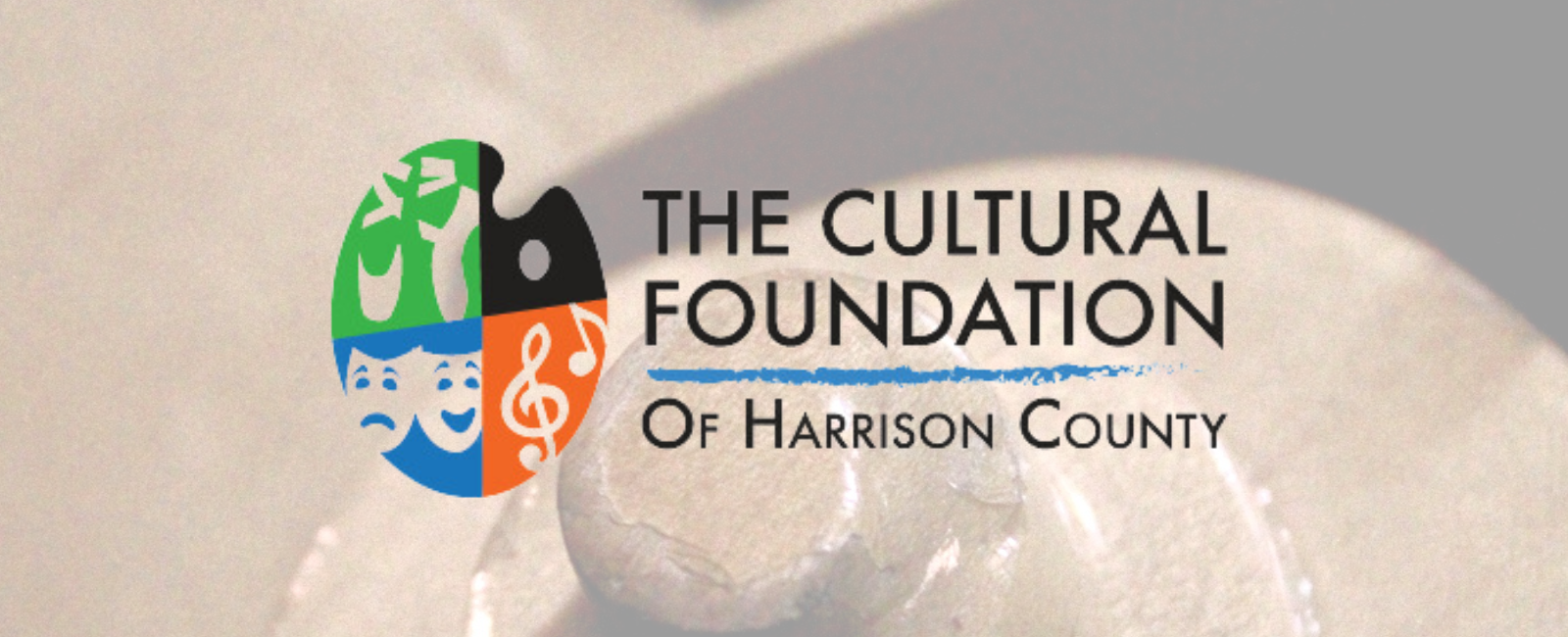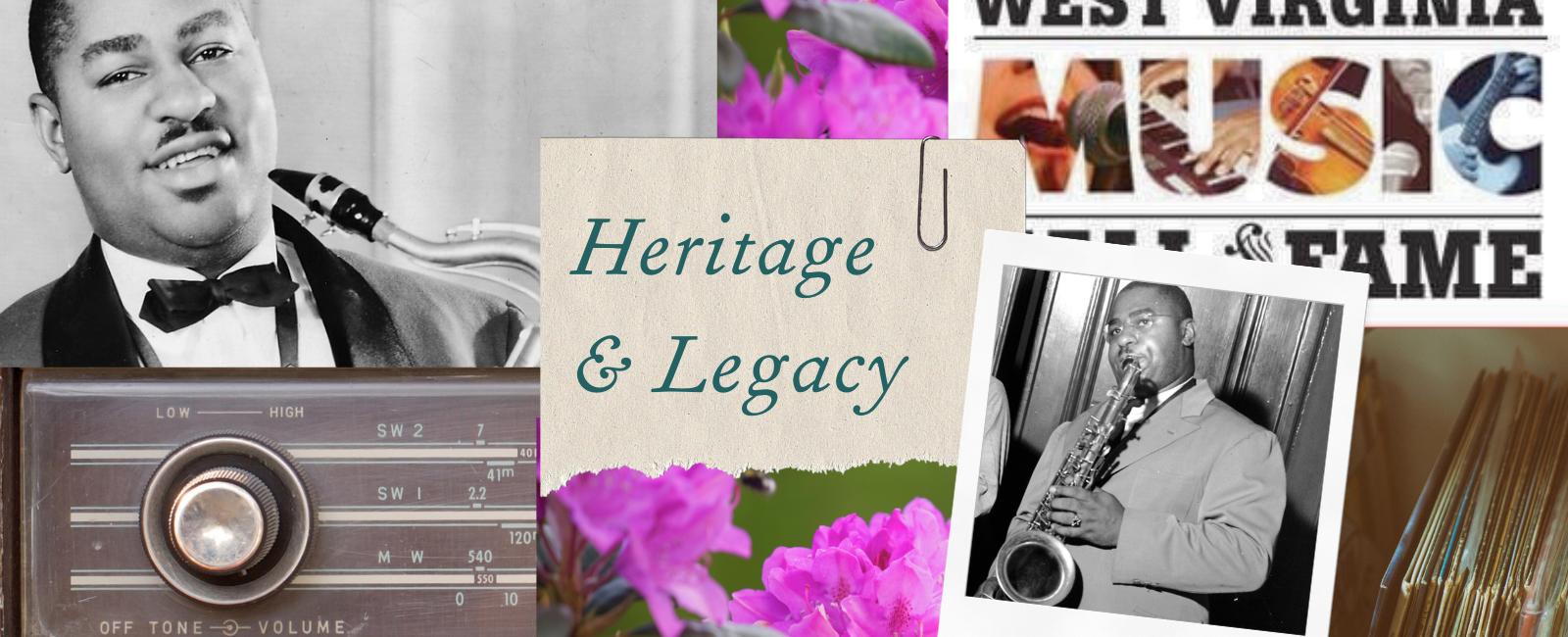West Virginia Music Hall of Fame – Class of 2008
Soprano Supreme
It may surprise you to know that West Virginia has produced one of the finest sopranos in American opera history. I say surprise, as opera is a musical genre most would not associate with the Mountain State, however, Clarksburg native Phyllis Curtin rose to the top of the national and international opera world and was a featured performer at Tanglewood in Massachusetts, La Scala in Milan, and The Metropolitan Opera in New York. When she passed away on June 5, 2016, her lengthy New York Times obituary noted:
A mainstay of the New York City Opera in the 1950s and ’60s, Ms Curtin was noted for the purity of her voice, the sensitivity of musical phrasing and the crystalline perfection of her diction. On the opera stage and in recitals, she gave the premieres of dozens of works by 20th-century composers. In 1955 she created the title role in “Susannah”, the most famous opera by American composer Carlisle Floyd. In the standard repertoire, Ms. Curtin was widely praised for her Mozart – she sang all of his major heroines over time – and for the title role in Richard Strauss’s “Salome.”

Critics praised Curtin for her intelligence rather than vocal acrobatics. In his book The American Opera Singer, Peter Davis wrote that the “purity and silvery sheen of her voice were adapted to an amazing variety of styles.”
Phyllis Curtin was also a renowned teacher and educator. In 1963 she taught her first Master Class at Tanglewood, where she became an artist in residence and a regular on the faculty, teaching master classes for 51 years before retiring in 2015. The Tanglewood classes launched a teaching career that took Curtin to Yale in 1974 as dean of the School of Music and then to Boston University in 1981 as dean of the School of Arts.
Metropolitan Opera star Phyllis Curtin was born Phyllis Jane Smith on December 3, 1921 in Clarksburg, West Virginia, to parents Betty and Vernon Smith. The family resided in the Stealey section of Clarksburg and they attended St. Mark’s Lutheran Church. In an interview with opera music writer Bruce Duffie in 2003, Curtin says,
My mother had a gorgeous voice and was the organist, the choir director, the everything at a small Lutheran church in the little town where I grew up in West Virginia. She even managed to get her whole congregation to do a sung liturgy for years.

After attending public schools in Clarksburg for 10 years, Phyllis enrolled at Monticello, a girls school at Alton, IL, for the equivalent of her junior and senior years of high school. From there she went to Wellesley, the well-known college for women at Wellesley, MA.
At Wellesley she thought of studying voice, but it was not with any thought of a musical career in mind. In fact, she majored in political science, a surprising fact in view of later developments. In an interview she gave in the late 1960’s to Life Magazine she explains: “When I did begin to study voice at Wellesley, it was just in order to continue to make music. But I had a most remarkable teacher there and I became terribly interested in what the solo singer does from the standpoint of poetry and presentation. It fascinated me as an art form, so when I graduated from college, I decided to stay in the Boston area so that I could continue to study in this field. I didn’t look at it, even then, as a career. But I worked at it very hard, and I kept arranging things so I could study more and learn more.”
Graduating in 1943, she did wartime work in Boston and found her way to Boris Goldovsky, who ran a Boston opera company and was starting up a pioneering opera program at Tanglewood.
In 1946, she spent the first of three Tanglewood summers as a student singing in Goldovsky’s Tanglewood productions. Among them, in 1946, was the American premiere of Benjamin Britten’s momentous “Peter Grimes”, with a young Leonard Bernsein conducting.
And to cap off a very busy year, a twenty-four year old Phyllis Smith returned to her hometown and St. Mark’s Lutheran Church, to marry Phillip Curtin, the same age, and a history professor at Swarthmore College She became Phyllis Curtin, in Clarksburg, in 1946.
Curtin made her New York recital debut in 1950 and New York City Opera debut in 1953. It was at City Opera, in the role of “Salome” that the young beauty drew the attention of Life Magazine. The production had received rave reviews and now Life was going to do a review of the show. They assigned photographer Gene Cook to take some pictures. Curtin’s performance of “The Dance of the Seven Veils” was said to be provocative and exciting. The story produced seven photographs of Curtin whirling and disrobing, and a short feature story entitled “PASSIONATE SALOME: American Soprano is Unveiled as a Talented Operatic Wriggler”. It began this way:
“Of all opera roles, Richard Strauss’s ‘Salome’ is one of the most difficult to perform. Two weeks ago Phyliss Curtin, a native of Clarksburg, WV, opened the New York City Opera season in Salome. Long- limbed, lush voiced, and intense, Soprano Curtin started slowly, saving herself. Then, in the opera’s climactic moments, she electrified her audience as she twisted and wriggled through the ‘Dance of the Seven Veils’. Life agrees with other critics who have called this performance ‘passionately effective’ ‘virginal, perverse, and dangerous’.”

Later in the piece Curtin is quoted commenting on “Salome”s character; “Salome is no slut, but a young girl who goes through a rapid awakening. As for my dancing, I’m glad they liked my wiggly kind of stuff.”
In April 1954 Life Magazine devoted three pages to the “PASSIONATE SALOME” story. Soon, after the story ran, Phyllis Curtin and her husband Phillip Curtin first separated, and then got divorced. In 1956 she married Gene Cook, the photographer who took the “Salome” pictures for Life. The couple later had one child, Claudia Madeleine, born in 1961.
* Link to Life Magazine story and pictures. LIFE – Google Books


In November 1961, she made her Metropolitan Opera debut as Fiordiligi in Mozart’s “Cosi Fan Tutte.” The New York Herald Tribune began its review, “Now Phyllis Curtin is at the Met, where she should have been a long time ago.” But according to her New York Times obituary after that, “the company’s imperious general manager, Rudolf Bing engaged her only occasionally. ‘You’ll never sing Tosca here because you’re not Italian,’ she recalled him having told her in the late ’60s. (In 1973, she sang the role with the Met in performances throughout the city of New York, her last appearances with the company.)
Even more painful than her dealings with the Met was a rupture with City Opera in 1966, which Curtin called “the only heartbreaking thing in my career.” It’s a story that seems to epitomize those many opera world sordid tales of “divas and drama”.
The company had been planning to stage Handel’s “Julius Caesar,” with the role of Cleopatra going to Ms. Curtin. Then Beverly Sills, in her 30s (Curtin would have been 44 at the time.) and a City Opera regular though not yet a huge star, demanded the role for herself. She threatened to rent Carnegie Hall and present a competing program of arias from the opera if the company did not relent. From her NYT obit: “The company relented. ‘That’s when the knife went into my back,’ Ms. Curtin told The Times in 1972. ‘After my life at the City Opera, which had always been successful for me and the company, I simply couldn’t believe that my family would do that to me.” Ms. Sills, who later said she regretted the episode, sang the role to immense acclaim. It was said to have made her career.
Phyllis Curtin retired from the stage in 1984 after a four-decade career as an internationally famous touring artist. By then, she had already begun a two-decade second career in academics which took her to Yale in 1974 as dean of the School of Music and then to Boston University in 1981 as dean of the School of Arts.
Phylliss Curtin returned to West Virginia many times throughout her life. Her mother and father moved from the Stealey neighborhood in Clarksburg and by the early 1950’s found themselves living on Main Street in Clarksburg, in the rapidly developing Goff Plaza section of town. Besides some holidays and summer visits to her hometown, she returned in 1968 and then again in 1985 for the funerals of her father and mother, respectively. Vernon and Betty Smith are buried in the Bridgeport Cemetery, Harrison County, WV.
With regard to performing in her native state, Phyllis Curtin sang with the Charleston Symphony Orchestra (now the West Virginia Symphony) in 1958 and 1968. She was named West Virginian of the Year with composer George Crumb in 1968 by the Charleston Sunday Gazette-Mail, and received a Lifetime Achievement Award at the 1999 Governor’s Awards for Culture, History and the Arts. She was inducted into the West Virginia Music Hall of Fame in 2008. She died in Great Barrington, Massachusetts, on June 5, 2016, at age 94.
Clarksburg’s Phyllis Curtin held a special place in the pantheon of American singers. A riveting performer of opera, a respected concert artist and a distinguished recitalist, she made her mark in the music of the world of opera, and left an imprint on American music.

AUTHOR’S NOTE: Clarksburg, West Virginia is my hometown too. Going to grade school in the 1960’s I knew Phyllis Curtin was famous, but I wasn’t sure why. She had to be famous because every “Welcome to Clarksburg” sign leading into town also had a sign that read, “BIRTHPLACE OF PHYLLIS CURTIN”, among the patchwork of other signs for Clarksburg churches and civic groups. Furthemore, why would the Robinson Grand movie theatre have such an elegant and regal portrait of Phyllis Curtin on prominent display in their lobby, if she wasn’t some kind of famous? In 5th grade we all took “West Virginia History” as an assigned class. This is where I really first learned about her celebrity in the world of opera.
In preparing for this profile of Phyllis Curtin, I was looking forward to finding out a lot more about her time in West Virginia. I was surprised at how little there was about her West Virginia days. Most biographies read something like, “a native of Clarksburg, WV, she graduated from Wellesley College…”, giving no details about life before college.
To assist me in my research I prepared a Writer’s Query seeking information on Curtin’s life in Clarksburg. I was hoping to find just the basics as this was a magazine profile and not a full biography. I reached out to social media, friends and to other resources. The response was much bigger than I expected. In the end I was able to verify Curtin’s neighborhoods in Clarksburg; learn the particulars of her wedding in Clarksburg to Phillip Curtin in 1946 (She was born Phyllis Smith); identify the church she attended; and verify that her parents lived in Clarksburg until the end of their lives and that they are both buried in Harrison County.
For me the biggest piece of news I got was that she did not graduate from high school in Clarksburg. You’ll have to read the piece to find out where she went, out of state, for her junior and senior years of high school.
I want to thank all of the people who responded to my query. Every item was useful. I call duplication, verification when I’m doing historical research. I was able to verify a number of things and also break some new ground on telling her story.
*Particular thanks to Michael Spatafore and the volunteers at the Clarksburg History Museum. Beth Gain was particularly helpful.
RECOMMENDED LISTENING – by the author.
1. Sibelius: Four Songs for Soprano and Orchestra – Phyllis Curtin, Leonard Berstein, NY Philharmonic (1965)
Phyllis Curtin first worked with Leonard Bernstein at Tanglewood in the late 1940’s. Here they are still working together about 20 years later.
Please Use Curtin/Bernstein picture included, here.
2. Phyllis Curtin singing the finale to Faust. With Jerome Hines and Nicolai Gedda.
Nicolai Gedda, Jerome Hines and Phyllis Curtin sing Faust finale (youtube.com)
3. Phyllis Curtin Sings Mozart, Faure, and more. Live – 1959.
Phyllis Curtin sings Mozart, Fauré and more! – Live, 1959 (youtube.com)
Cover photos source: The New York Times
____________________





